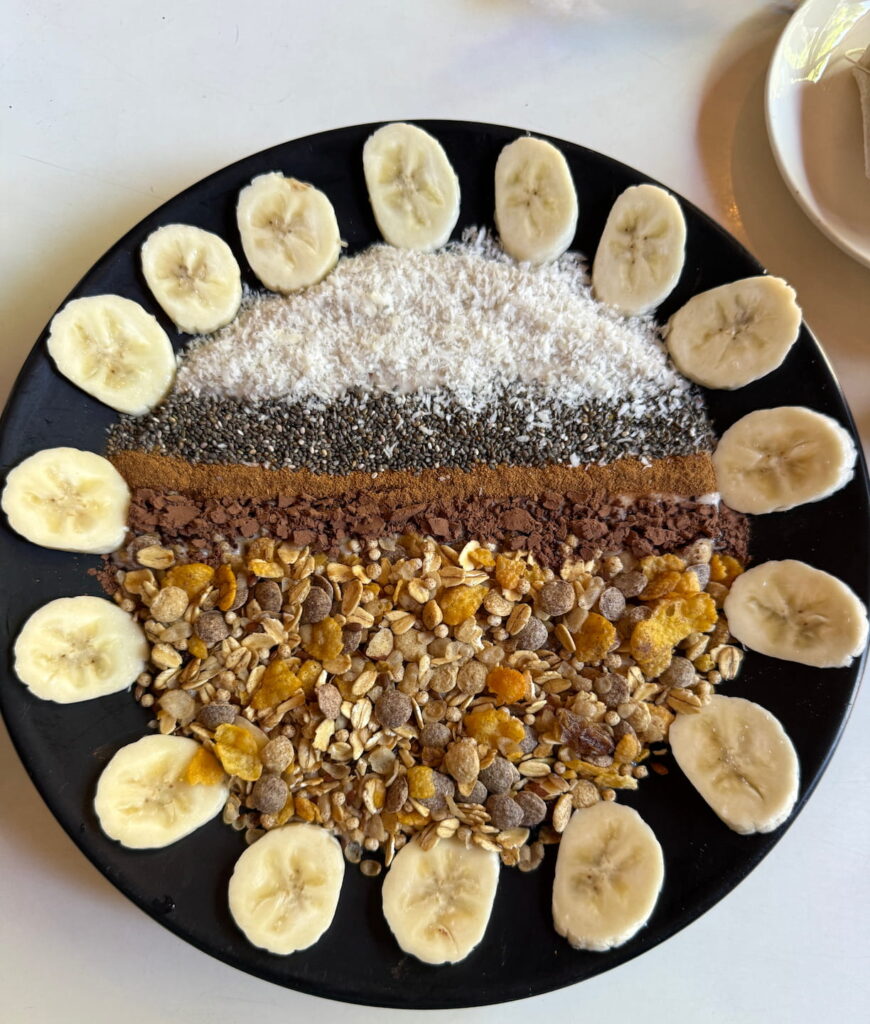Have you ever noticed how your mind feels after a meal? Sometimes light and clear, other times heavy, foggy, or restless? In the yogic tradition, this is no accident. The food we eat doesn’t just nourish the body, it deeply influences our thoughts, emotions, and energy.
In a world where stress and fatigue have become normal, sattvic eating offers something rare: balance. It’s not a diet trend. It’s a spiritual approach to food that supports clarity, vitality, and inner peace.
To understand sattvic food, we first need to understand the three gunas, qualities that shape everything in nature, including our mind.
In food, sattva is fresh, wholesome, plant-based meals prepared with care and eaten with gratitude. Fruits, vegetables, whole grains, nuts, and herbal teas, all these uplift your body and mind. When you eat sattvic food, you feel light, clear, and deeply nourished, not just physically but emotionally.
In food, rajas show up as overly spicy dishes, too much caffeine, fried snacks, and anything eaten in a hurry. These foods and habits keep your system on high alert, creating restlessness and agitation.
When tamas takes over, life feels stuck. You sleep too much, lack motivation, and crave “comfort foods” that only drain your energy further.
When the mind is sattvic, it is calm, steady, and ready for deep meditation. The purpose of a sattvic diet is simple: to increase sattva and reduce the pull of rajas and tamas.
Not all vegetarian food is sattvic. Sattvic food is fresh, light, and full of prana (life force). It is easy to digest, naturally energizing, and prepared with mindfulness.
Here’s what defines food as sattvic:
Sattvic food doesn’t just change how your body feels; it changes how your mind operates. Ayurveda and modern science agree: digestion isn’t only physical. The gut and brain are deeply connected.
When you eat heavy, tamasic food overly fried, stale, or processed, your body feels sluggish, and so does your mind. Rajasic foods are spicy, overly stimulating, and make you restless.
Sattvic food, on the other hand, soothes the nervous system. It provides steady energy instead of spikes and crashes. Your mind becomes more conscious and calm, perfect for meditation and spiritual practice.
Conscious eating is more than a way of nourishing the body, it’s a practice of presence that naturally extends into every aspect of life. By slowing down, savoring each bite, and honoring where food comes from, we cultivate awareness, gratitude, and balance, creating a foundation for truly conscious living.
People often expect dramatic changes from diet fads, but sattvic eating works in a quieter, deeper way. Over time, the benefits show up in both the body and mind:
Ancient Vedic wisdom speaks of four pillars that sustain health and harmony:
Food is the foundation. Get ahar right, and the other pillars become easier to balance. A sattvic diet sets the tone for a sattvic life.
You don’t have to overhaul your entire kitchen overnight. Start small. Begin with breakfast, swap packaged cereals for fresh fruit and soaked nuts. Add more seasonal vegetables to your meals. Cook consciously.
Imagine your plate: soft rice or quinoa, a simple dal, lightly sautéed vegetables with ghee, and a fresh salad. Maybe a glass of warm milk with turmeric in the evening. Simple, grounding, and full of prana.
The key is consistency, not perfection. Sattva grows slowly, like a seed nurtured over time.
People often think sattvic means bland or restrictive. It’s neither. Sattvic food can be delicious, full of flavors that don’t overstimulate. The mistake is swinging to extremes—becoming rigid or judgmental about food.
Another mistake is ignoring the mental aspect. You can eat sattvic food in a rajasic way—rushing through meals, scrolling on your phone. True sattva comes when eating is mindful and peaceful.
Sattvic living doesn’t stop at the plate. It’s about creating harmony in how we think, speak, and act. What you read, watch, and listen to also feeds your mind. The more sattva in your life, the easier it becomes to meditate, to feel connected, and to live with clarity.
Sattvic eating is not about following strict rules, it’s about returning to what feels natural. When food is fresh, light, and full of life, it reflects in your energy, mood, and even your relationships.
If you’ve been feeling heavy, anxious, or scattered, try introducing more sattvic meals. Notice how your body responds. Notice how your thoughts shift. In time, you’ll see that food is more than fuel. It’s a bridge, to clarity, to balance, to yourself.
Start Your Conscious Living Journey
Want to learn more about Sattvic and Ayurvedic eating: Check out the links below
> Yoga therapy teacher training
